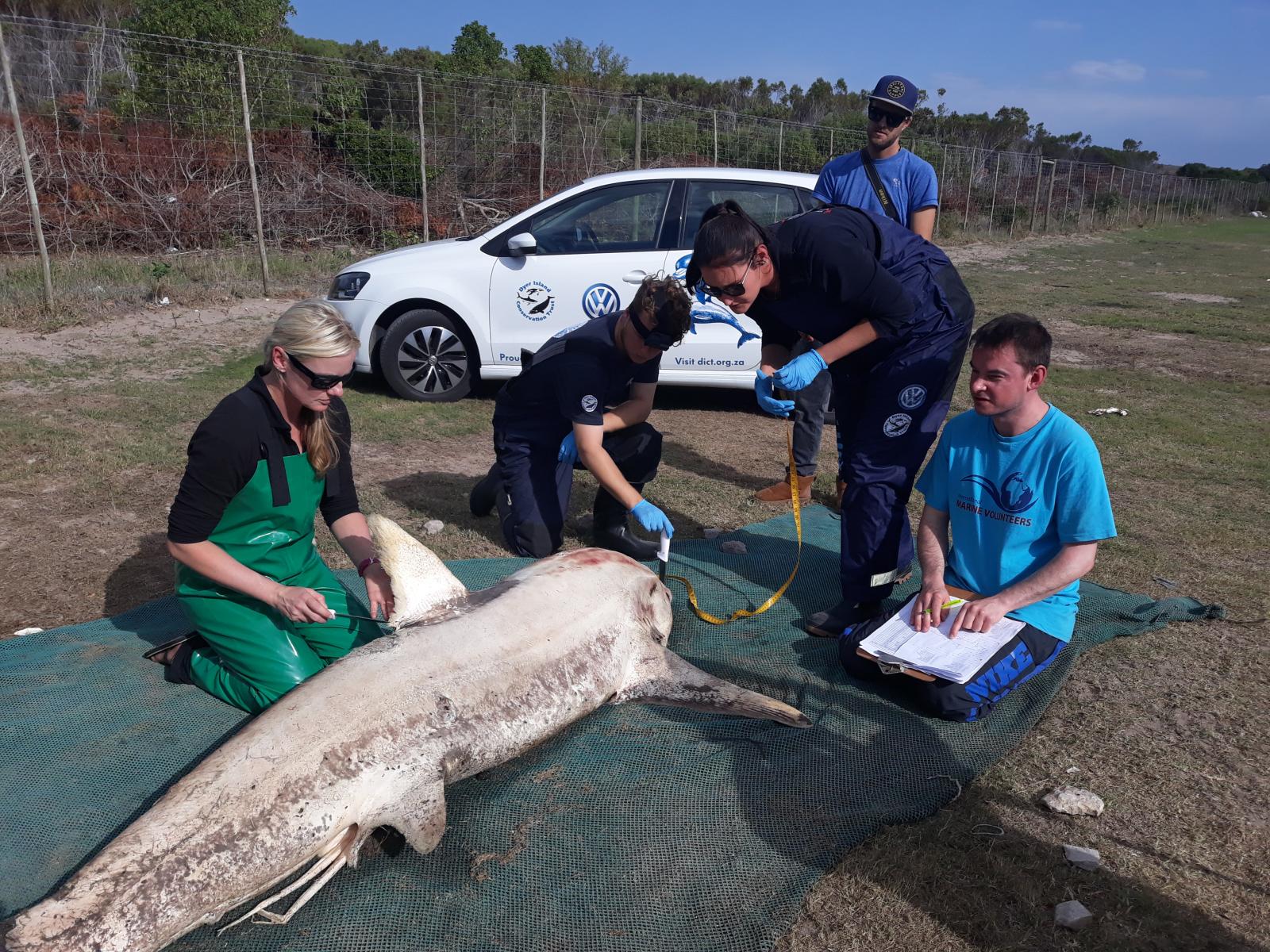Thresher shark necropsy at the Dyer Island Conservation Trust

On Sunday 6th of May, at 2h30 pm, a deceased shark was reported to the Dyer Island Conservation Trust. The Marine Dynamics team with the help of their international marine volunteers retrieved the animal from the high tide mark at die Skip near Pearly Beach. The necropsy was led by PhD candidate, Alison Towner and took place at the volunteer lodge the next day.
Exactly a year to the day that two orcas killed four white sharks in the Gansbaai area (see link to Marine Dynamics timeline) and concerns were that this could be connected as the now infamous ‘Port and Starboard’ were recently seen in Western Cape waters. However, the necropsy provided no evidence to pin point a cause of death.
The shark measured 4 metres from its head to the end of its enormous tail, which makes up half its body length. It was a reproductively mature male as determined by the calcified condition of its claspers (external mating appendages). “There were no obvious signs of trauma or fishing related damage/gear on this shark. We opened the shark and found an intact liver - it seemed to be in good condition,” said shark biologist Alison Towner. “It was fascinating for the team to compare the different internal shark anatomy with the great whites they had previously worked with.” The shark had remnants of fish vertebrae in its stomach contents. Tissue samples were collected for genetic and diet studies along with body measurements.
Thresher sharks are known in Afrikaans as ‘Sambokhaai’. They use their tremendous whip like tail to stun and kill their prey and are capable of fully breaching the surface of the water. Compared to great whites their jaws and teeth are very small as most of their hunting power comes from their tails. There are three types of Thresher shark, the pelagic, the big eye and the common. All three have high value meat and were listed last year on CITES appendix 2. They are also listed as vulnerable on IUCN, the same as the great white sharks. It was agreed that this specimen was a common thresher shark (Alopias vulpinus). They are rare in South Africa and this was a first for the Dyer Island Conservation Trust team.
Special thanks to Koos and Hanneke De Wet who together with their children discovered the shark and reported it to Alison Towner. Special thanks to those who assisted with the necropsy.

.jpg)
_1420x587_crop_80.jpg)






